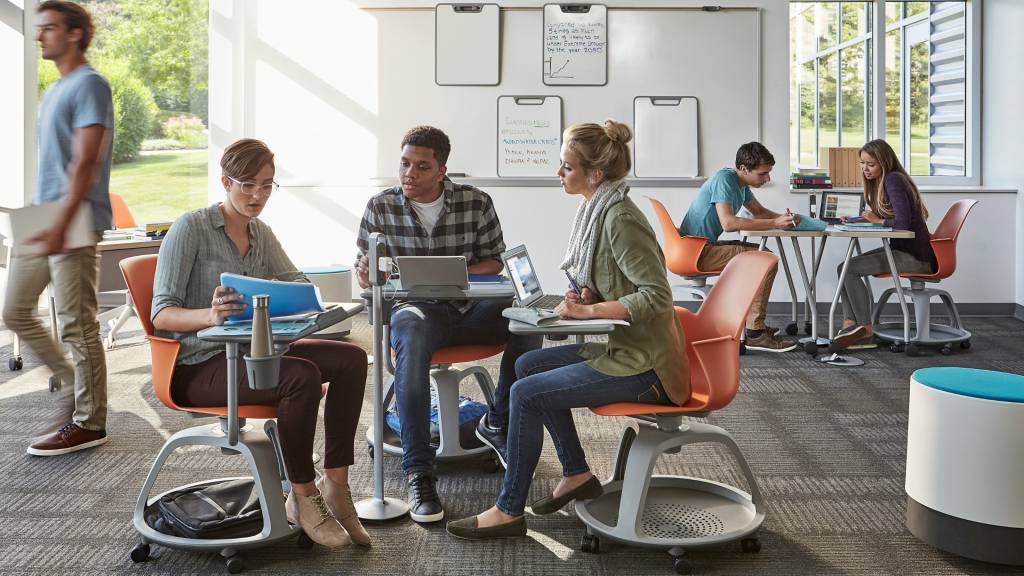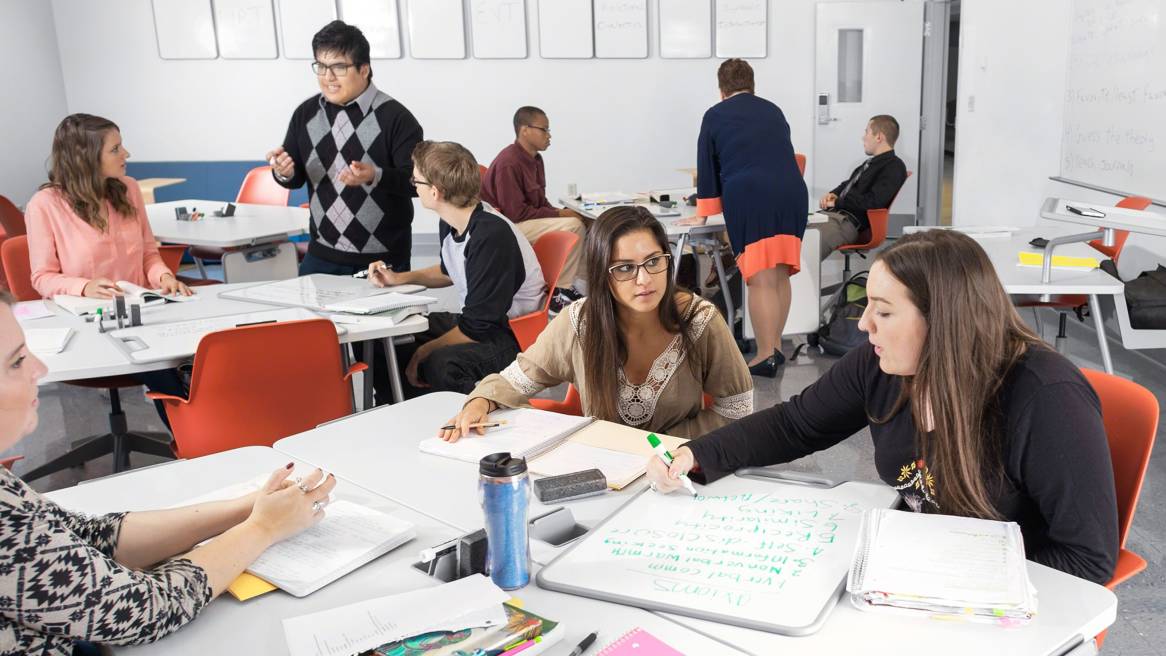A Two-Part Equation for Active Learning
Three recipients of the Steelcase Active Learning Center Grant share ingredients for implementing a successful active learning initiative.
Active Learning Center results included fewer poorly-performing students, more highly-rated teachers and, at one school, 100 percent of the teachers surveyed wanted to use the Active Learning Center again. These are just a few of the positive results three former Steelcase Education Active Learning Center Grant (ALC Grant) recipients shared at this year’s ELI Annual Meeting — a place where higher education institutions and organizations committed to advancing learning through information technology innovation come together every year.
Connecticut’s Fairfield University, California State University Los Angeles, and St. Edward’s University in Austin, Texas were already developing active learning pedagogies when Steelcase Education awarded them ALC Grants in 2015. As they shared their learnings with fellow educators at ELI, they concluded active learning can be boiled down to a simple equation:
Mobile Classroom + Active Pedagogy
=
Positive Student and Teacher Outcomes
Mobile Classroom
In Fairfield’s active learning classroom, students face each other toward the center of the room. Verb whiteboards and Thread portable power distribution provide places for group work with technology throughout the room. The mobile Node chairs and Verb tables let students easily work in groups and the Verb easel helps display ideas.
After Fairfield University installed their ALC classroom in 2015, professors began to adapt to the mobile and flexible spaces that had no traditional ‘front.’ The active learning classroom eliminates the front-and-center instructor station, abolishes standard rows of students, and integrates whiteboards and technology tools throughout the space. By being able to move tables and chairs, they could create configurations that engaged students, and with no ‘front’ to the classroom they could increase student involvement.
“There is no front and no back. Nobody can hide,” says one professor. Fairfield now gets rid of the traditional classroom ‘front’ in nearly every classroom on campus and recommends this as a great first step for any active learning initiative.
“The furniture is an essential component of the classroom that really grabs people’s attention and creates a fluid environment for learning,” said Jay Rozgonyi, Fairfield Director of Academic Computing & Learning Technologies. “The furniture has become a catalyst for this whole project which when combined with technology reimagines teaching.”
ACTIVE PEDAGOGY
While mobile classrooms can enhance and encourage active learning, it’s the second element of the equation that shifts teaching practices – active pedagogy. Cal State LA, another ALC Grant recipient, set up a pilot classroom to test mobile furniture. But, they found educators left to their own devices weren’t maximizing the classroom’s potential. Cal State LA established a faculty development strategy that included an active learning workshop to help faculty feel comfortable moving around in the active learning classroom, teaching in a room with no ‘front’ and integrating tools and technology into their classroom activities.
“My goal is for them to feel like an active learning rockstar so they can get up at the end of this workshop and comfortably orchestrate active learning activities in the active space,” said Beverly Bondad-Brown, director of Academic Technology at Cal State LA’s Center for Effective Teaching and Learning (CETL). Workshop exercises included designing an ideal active learning classroom, sorting a deck of cards with active learning exercises and brainstorming on an active learning session planning sheet.
“Faculty may try something, and if one little thing goes awry, then they may feel like they’re just done with active learning altogether,” said Bondad-Brown. “The (planning) sheet prompts them to consider all aspects of their activity so that they won’t miss something, have a poor experience and abandon active learning. They walk away more confident.”
POSITIVE STUDENT AND TEACHER OUTCOMES

Dr. Tricia Shepherd brought years of experience with active learning to St. Edward’s. Along with her fellow panelists, she sees a positive change in attitudes and behavior since implementing an active learning classroom. She says students are very thoughtful about using the space to improve their learning. At the ELI Annual Meeting, Shepherd and the other educators shared how the sum of these active learning initiatives resulted in a successful active learning experience for teachers and students.
Cal State University Los Angeles
- For some classes, Cal State LA also saw a dramatic decrease in DFW (grades D, F or withdrawals) rates, from 18.1 percent to 3.45 percent, when teaching a course in the active learning classroom.
- Students with an instructor trained through the Cal State LA workshop were two times more likely to rate that instructor highly effective in helping them learn course material.
- Students reported an increase in comfort, collaboration, engagement with content, as well as more stimulation and interest in the new active classroom.
- Teachers reported feeling “more energized” and students didn’t want class to end.
- 100 percent of teachers who taught in the active learning classroom said they wanted to teach there again.
- 35 percent of class time now spent with students actively engaged in small group work, whole class discussion or presenting to classmates.
- Teachers noted a stronger classroom learning community and enhanced student relationships since not all eyes were directed toward the professor all the time.
- Professors reported increased satisfaction and motivation for teaching in the updated classroom.
- DFW rate went from 29 percent to 22 percent with the only changed variable being the active learning classroom.
- Professors used more active learning practices than in previous years simply by having access to the active, mobile room.
These outcomes were all attributed to the successful implementation of each factor in the active learning equation. Find out more research and outcomes from previous grant recipients.
Steelcase Education awarded grants to another 16 schools in the most recent Active Learning Center Grant cycle. Learn more about the program and sign up to be notified when the next cycle begins.


